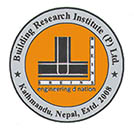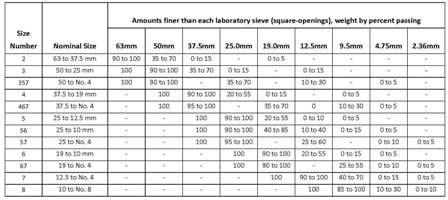
Today (NST)
Friday, Apr 25, 2025
Smart Search
Please post in your Technical Queries, Comments & Suggestions to Contact us......
Advertisement

For Advertisement
|
|
| Subscribe to BREINS Sci-Tech |
| Visit this group |

Concrete Technology
Some of the practical grading requirements as per the ASTM (C33) for different material ranges are given in table below:
Grading
Requirements for Coarse Aggregates (ASTM C33)

Rounded or Angular
Aggregates?
Several aspects of the aggregates need to be investigated while arriving
conclusion to this simple looking question. Surface texture of the aggregate
particle also plays a significant role on this.
Generally angular aggregate particles have rough texture and round aggregate particles are smooth textured. From the bonding point of view it seems that smooth textured rounded particles form a poor bond with cement paste. But the smooth looking surface of rounded particles is also rough enough at the microscopic level and the cement-gel that forms a bond with aggregate surfaces also has particle sizes in the level of microns. Both, surface and the cement-gel reacts at the sub-microscopic level; hence the theory that smooth surfaced particles yield poor concrete is not fully justified.
Angular aggregates have higher specific surface area than smooth rounded aggregate. With a greater specific surface area the angular aggregate may show higher bond strength than rounded aggregates. Also, angular aggregates exhibit a better interlocking effect in concrete that contributes in strength of concrete.
Higher specific surface area of angular aggregates with rough texture demands more water for a given workability than rounded aggregates. From this point of view for a given water-cement ratio, rounded aggregates give higher strength. Superimposing all these facts, it can be concluded that:
For water-cement ratio below 0.4 the use of crushed aggregate has resulted in strength up to 38 percent higher than the rounded aggregate. With an increase in water-cement ratio the influence of roughness of surface of the aggregate gets reduced and at a water-cement ratio of 0.65, no difference in strength of concrete made with angular aggregate or rounded aggregate has been observed.
Strength of Concrete
Concrete being a composite material that constitutes basically of cement
paste and gravel; has complex property in terms of its strength too.
Strength of concrete is dependent on so many factors and minor variation
in one of these may cause variation in its strength. The strength of
concrete is mainly dependent on:
Water to Cement ratio
Degree of Hydration
Aggregate Cement Ratio
Grading, Surface texture, Shape, Strength and Stiffness of aggregate
Maximum Size of aggregate used
Age of Curing